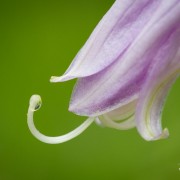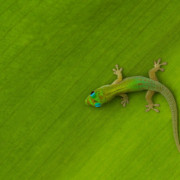Top 5 Creativity Macro Photography Tips
Macro photography opens up a world of possibility for nature photographers. By seeking out nature’s smallest scenes, a photographer can explore all kinds of details, patterns, textures, and subjects that are often hidden or seen in less interesting ways by the human eye. In this post, I share five tips for getting started with and expanding your creativity through macro photography.
Note: I am not terribly interested in the technical side of photography, which is reflected in my casual use of terms and the example photos in this post. The technical definition of macro photography focuses on the size of the subject in real life compared to its size on your camera’s sensor. With 1:1 magnification with a macro lens, for example, a subject that is a half-inch in real life will be a half-inch on a sensor. For my photography, however, this technical definition doesn’t matter much. As long as I can get up close to a small subject in nature using my macro lens, I consider it macro or close-up photography even if the subject is bigger than the sensor in my DSLR.

Autumn Pastels – tiny rosette-shaped plants found in southern Utah on the side of a canyon wall. Each rosette is about the size of a pencil eraser and the full clump of plants is about the size of a clenched fist.
Tip #1: Spend time looking for details
When I think about the practices that helped me most in developing my own portfolio of nature’s smallest scenes, the time I spent building my observational skills quickly rises to the top. Some of my favorite macro photos are of subjects that I only found through slow wandering and careful observation of my surroundings. The photo above is a good example of this tip in practice. Each individual rosette in this plant is about the size of a pencil eraser. The clumps of plants are typically no larger than a clenched fist. Additionally, they grow very sparsely in crevices in sandstone walls in southern Utah.
I only found this subject by walking slowly through a remote canyon. I was looking for details that might make an interesting subject for photography. While many of my finds like this include some luck, I have also found that spending time looking for details and seeking to really observe a place is essential in finding interesting subjects for macro photography. If you want to find interesting subjects of your own, first work on building your observational skills.
Tip #2: Explore a variety of subjects for macro photography
Years ago, when a friend suggested that I should take up macro photography, I said I wasn’t really interested. At the time, macro photography meant two things to me – isolated portraits of cultivated flowers and insect photography. While I have seen many wonderful photos that fall into these two categories, neither pursuit interested me much. Still, I visited a botanic garden with the same friend and found all sorts of interesting subjects to photograph up close.
My macro lens quickly became one of my most used pieces of equipment. This is primarily because I broadened my thinking about the range of natural subjects which could be creativity photographed up close. Thus, I encourage you to think broadly about the natural subjects that can work for macro photography: flowers, plants, trees, leaves, bark, stones, rocks, ice, tiny living creatures, mud, salt, sand, reflections, bubbles, and many more.
Tip #3: Get close – VERY close – to your subject
One of the main benefits of using a macro photography lenses or extension tubes is the ability to get very close to your subject. This allows a photographer to capture tiny details of tiny subjects in a way that is very different than how humans typically see with their own eyes. This different perspective can add a sense of awe and wonder for a viewer.
Since nature photographers are typically working in the outdoors with mostly fixed subjects, getting close often requires some awkward contortions. Thus, shed your self-consciousness about looking a little foolish in public. Cozy up to your subject, as I did in a campground in Organ Pipe Cactus National Monument. For the photo above, I was awkwardly leaning deeply into a massive cactus. I stood with my lens as close to the cactus tines as I could get – all on the side of a road in a campground. Getting this interesting perspective was worth the risk of getting poked all over and looking a little strange to my campground neighbors. With this lesson in mind, I encourage you to use the close focusing benefits of your macro lens. Get close, even if it is awkward!
Tip #4: Experiment with depth of field for macro photography
For macro photography, experimenting with depth of field is one of the best ways to showcase the same subject in different ways – especially when working with plants. Take the example photograph above. This photo is of a smoke tree, taken in a southern California desert. Smoke trees have very aggressive thorns and look like quite unpleasant plants. By using narrow depth of field (here, an aperture of f/2.8), I was able to significantly soften the feel of the thorns and capture a much more gentle portrait of this beautiful tree.
When using narrow depth of field, also experiment with varying your focus point. Doing so can have a big impact on the final result. And, finally, be aware of your background. When using narrow depth of field, I personally prefer heavily out of focus background elements with very few details. This helps the main subject stand out and is often more visually pleasing. You can read about some of my other tips for using narrow depth of field in this Visual Wilderness post.
In some of the other photos in this post, I wanted all or most of my subject in focus. For the photo below, for example, I used f/14 to help get all of the subject in focus. Often, using greater depth of field renders a subject more literally with all of its details more obvious to the viewer. Narrow depth of field, on the other hand, often lends a more dreamy and abstract quality to a photo. I almost always try both approaches – and everything in between – when out in the field so that I can decide later which approach worked best for each subject.

Although this might look like ice at first glance, it is evaporation patterns at a salt flat in Death Valley National Park.
Tip #5: Seek out abstract macro subjects
A lot of nature photography is very literal. Literal in the sense that if you take a photo of a mountain, it typically ends up looking like a mountain in the final photograph. Macro photography is one of the best ways to depart from these literal interpretations of nature.
Take the above photo of the organ pipe cactus. It is an example of a photo that has started to depart from a literal interpretation. The subject is clearly a plant and probably a cactus. However, a viewer needs to spend a little time exploring the photo to get a sense of what they are actually viewing. The photo immediately above is a bit more of a mystery, both in terms of the sense of scale and the subject. If you want to expand your creativity and deepen your portfolio of macro photographs, I encourage you to seek out more abstract renditions of natural subjects.
Please share any additional beginner macro photography tips in the comments below.












